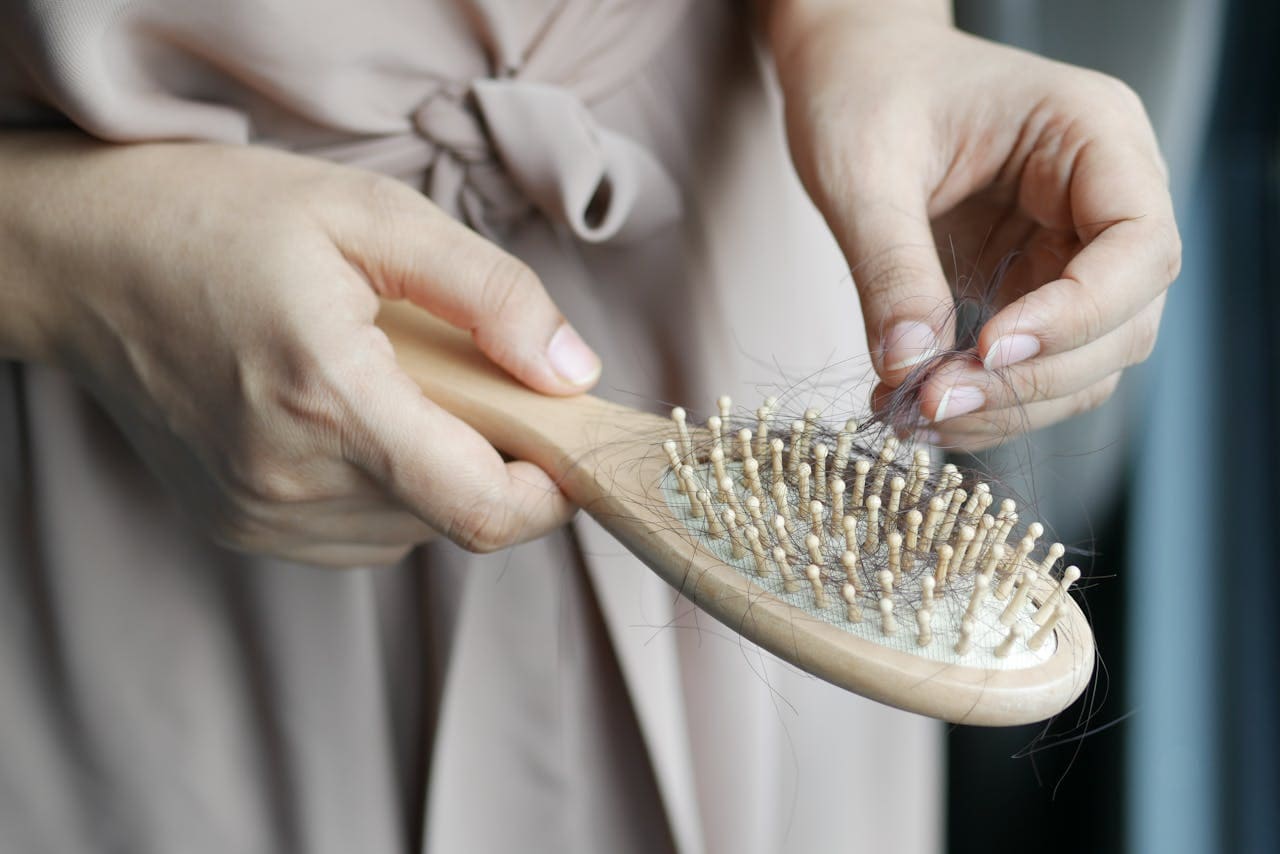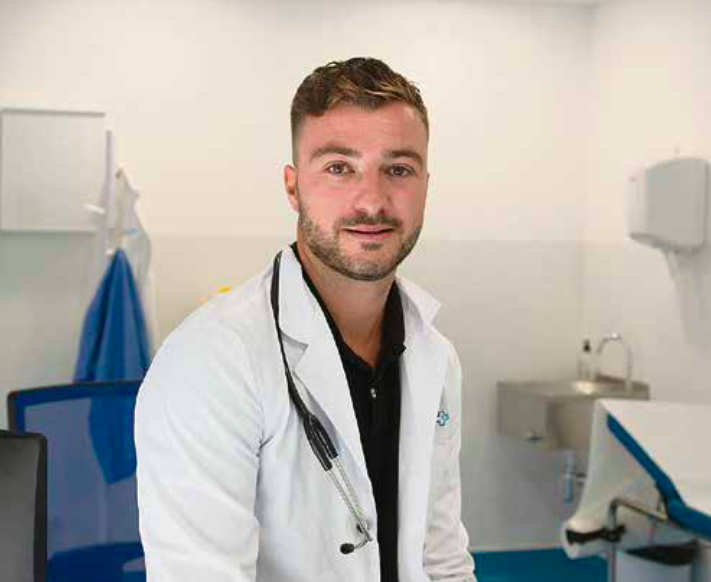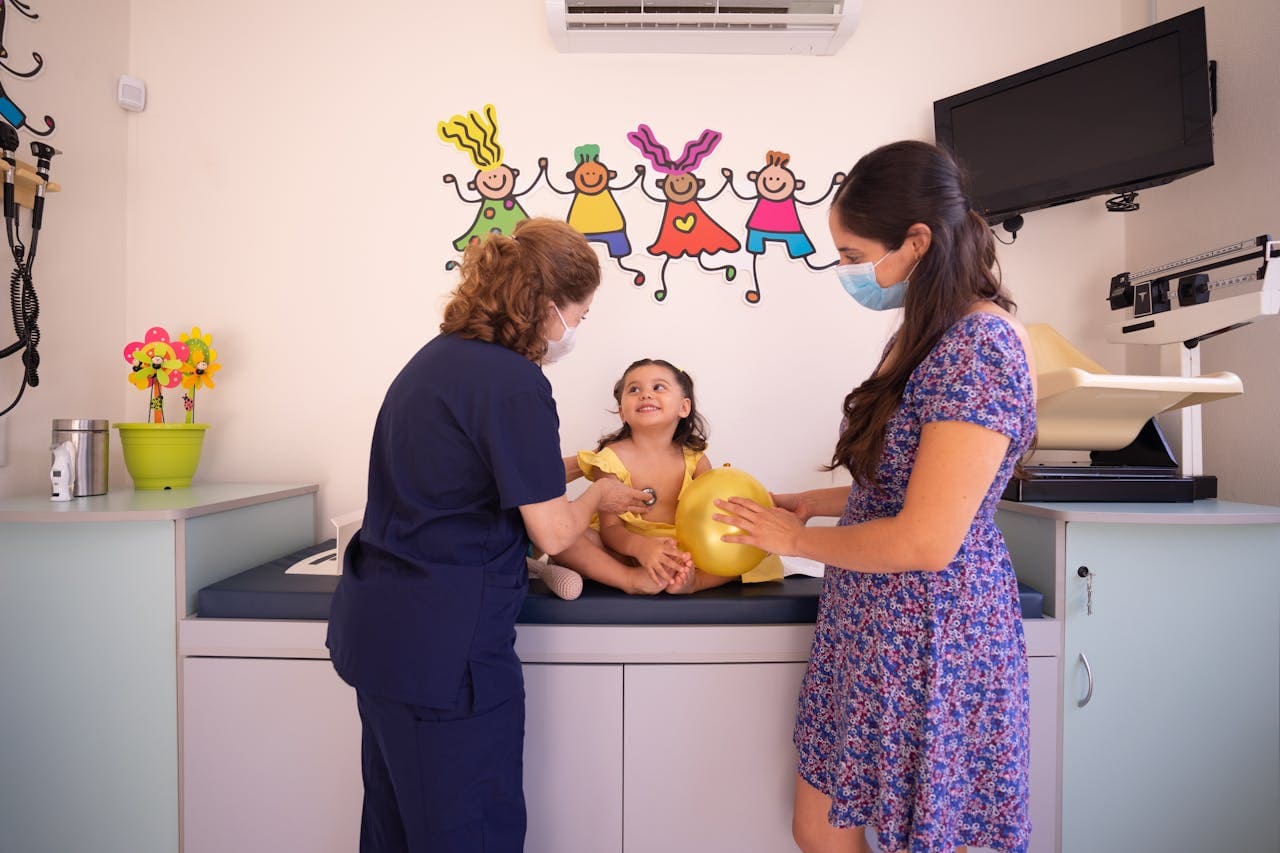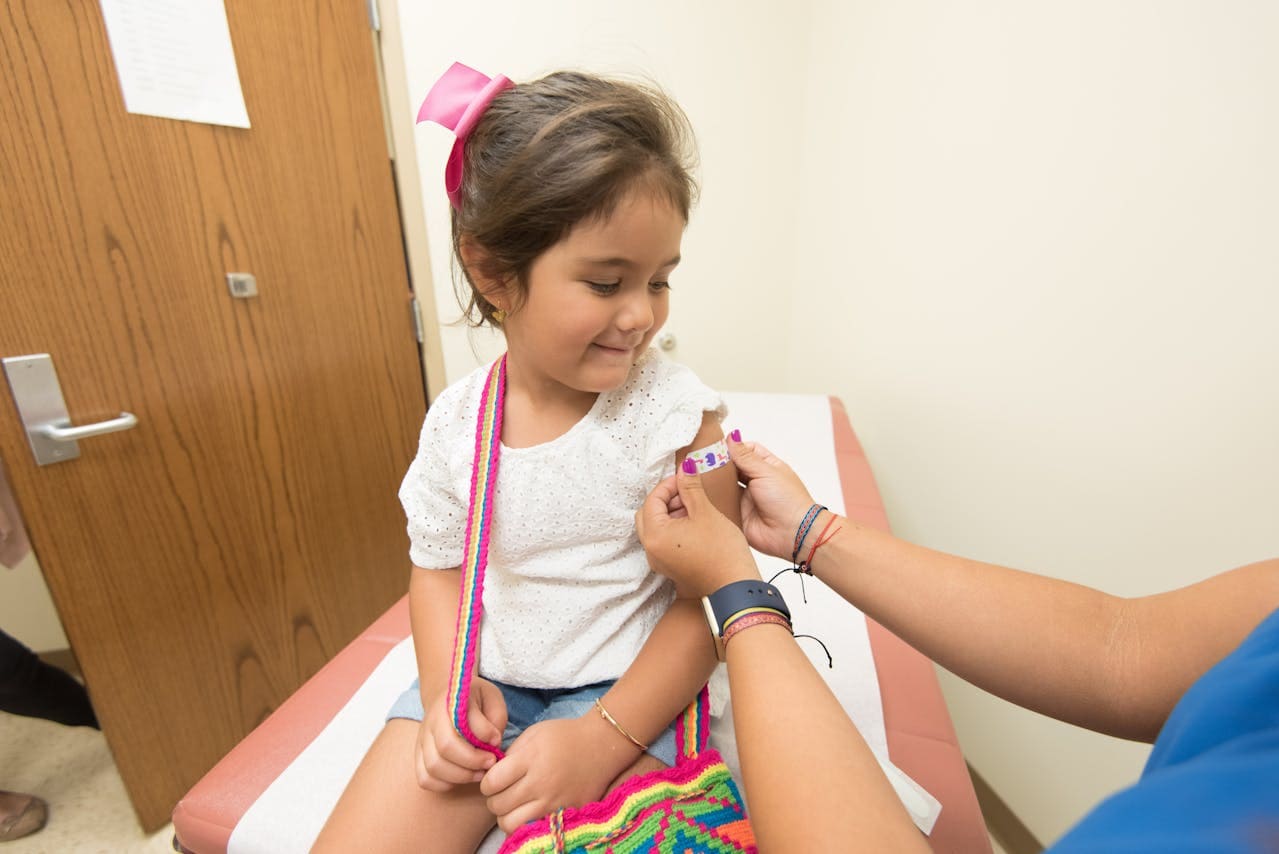
Online female hair loss treatment
Regain confidence with a doctor-designed regrowth plan — start your video consult today.
 Same-week video appointments with dermatology-trained doctors
Same-week video appointments with dermatology-trained doctors Tailored therapies: minoxidil spray, spironolactone, or dutasteride off-label
Tailored therapies: minoxidil spray, spironolactone, or dutasteride off-label Nutrient & hormone labs arranged locally when indicated
Nutrient & hormone labs arranged locally when indicated Diet, supplement and stress-management guidance for stronger, fuller hair
Diet, supplement and stress-management guidance for stronger, fuller hair
How to stop female hair loss online
Move from video diagnosis to a medical-grade regrowth plan in three easy steps.

If you experience rapid shedding, painful scalp inflammation or smooth bald patches, do not self-medicate—book a specialist consultation as soon as possible.
Book your hair loss assessmentFemale hair-loss doctors on Oladoctor
Compare GPs and dermatologists with trichology expertise, then book your video consult in minutes.
Female hair loss: key facts & treatments
Causes, red-flag symptoms, science-backed treatments, lifestyle boosters and what to expect from diagnosis to long-term follow-up.
Types & causes of female hair loss
Female-pattern hair loss (FPHL), the most common form, produces a widening part and general reduction in density across the crown. By contrast, telogen effluvium triggers sudden, diffuse shedding roughly two to three months after stressors such as illness, crash dieting, childbirth or a severe emotional event. Less frequently, alopecia areata causes sharply defined, coin-sized bald patches when the immune system attacks individual follicles. A full diagnostic checklist for each pattern is provided in the EADV 2024 guideline.
Why the follicles shift from growth to shedding varies. Hormonal changes (peri- and post-menopause, polycystic ovary syndrome), thyroid dysfunction, low ferritin or vitamin D, certain medications (retinoids, valproate) and chronic systemic inflammation all shorten the anagen phase. A meta-analysis in JAMA Dermatology (2023) found that ferritin below 30 ng/mL doubled the risk of telogen effluvium in pre-menopausal women — a reminder that blood work matters in seemingly “cosmetic” complaints (JAMA Derm 2023 study).
Correctly identifying your loss pattern is vital, because therapies are type-specific. Minoxidil 5 % spray remains first-line for FPHL, whereas deficiency-related shedding responds to iron or vitamin-D repletion; patchy alopecia areata may need intralesional corticosteroids or JAK-inhibitors. During an online visit your doctor reviews medical history, checks high-resolution scalp photos (or live video dermoscopy) and, if warranted, orders labs — ferritin, TSH, sex hormones, vitamin D — to uncover hidden triggers.
Armed with that data, you’ll leave the consult with a bespoke plan that can include:
- prescription topicals or orals
- nutraceutical support
- low-level-laser therapy at home
When to seek help — red-flag symptoms
Most women lose 50–100 hairs a day; this “physiological shed” is rarely visible. If you start seeing fistfuls on your pillow, in the shower, or a noticeably wider part within 6–12 weeks, you have crossed into the medical domain of excessive telogen loss and should book a consult.
Watch for red-flag features that may signal scarring or systemic disease:
- Sudden bald patches that expose shiny, smooth skin
- Burning, pain or itching in the affected area (follicular inflammation)
- Scale, pustules or yellow crusts along the hairline or crown
- Eyebrow, eyelash or body-hair loss in parallel with scalp shedding
- Toenail or fingernail pitting, a hallmark of autoimmune activity
These signs are highlighted in the American Academy of Dermatology guidance on scarring alopecias, which stresses prompt intervention to avoid permanent follicle destruction (AAD clinical guide).
Another red flag is rapid diffuse thinning following childbirth that does not stabilise by month four. Persistent postpartum shedding can mask thyroiditis or iron-deficiency anaemia — both conditions warrant blood work, per the 2023 British Thyroid Foundation statement on post-partum endocrine change.
Finally, any hair loss accompanied by systemic symptoms — unexplained fever, joint pain, fatigue, heavy menstrual bleeding — may point to lupus, coeliac disease or other chronic illnesses. The UK NHS overview lists diffuse alopecia as an early clue for over twenty underlying disorders (NHS hair loss overview).
Practical tip: Before your video appointment, document red-flag areas with close-up photos taken in daylight and note the exact date when massive shedding began. Precise timelines help the doctor decide whether urgent in-person dermoscopy or a biopsy is required.
Medical treatments that actually work
Topical minoxidil 5 % spray is still the first-line choice for female-pattern hair loss. In a 24-week randomised trial of 404 women it boosted terminal-hair count by 13 – 18 % versus placebo; most participants noticed less shedding by week 8 (Olsen et al., 2022). Apply once daily to a dry scalp—mild “shedding” in the first two weeks signals that dormant follicles are re-entering active growth.
For androgen-driven thinning (including many PCOS cases), oral anti-androgens add another layer of control. A 2023 meta-analysis showed that spironolactone 50–100 mg/day produced clinical improvement in 74 % of women within nine months (Gupta & Mysore, 2023). In post-menopausal patients, low-dose dutasteride 0.5 mg weekly (off-label) can outperform finasteride, but requires effective contraception for anyone of child-bearing potential.
Regenerative options such as platelet-rich plasma (PRP) and microneedling leverage wound-healing pathways to up-regulate growth factors. A 2024 pooled analysis found that adding PRP to minoxidil delivered a 31 % greater hair-density gain than minoxidil alone after three monthly sessions (Temprano-Carazo et al., 2024).
Adjuncts that round out a regimen include:
- Low-level laser caps (650 nm, 20 min × 3 week) for mitochondrial stimulation
- Targeted nutraceuticals—iron to keep ferritin > 70 ng/mL, vitamin D to reach 50 ng/mL, and
- Marine-collagen peptides, which increased hair thickness in a 180-day RCT of women with thinning hair (Tan & Sinclair, 2021).
Lifestyle & supplement boosters
Eat for stronger keratin. Hair shafts are 95 % protein. In a case–control study of 104 Italian women, adherence to a Mediterranean-style diet rich in raw vegetables, herbs and ≥ 90 g protein daily cut the odds of female-pattern hair loss by 56 % compared with a Western diet — an effect the authors attributed to antioxidant and amino-acid supply (Fortes et al., 2018).
Correct the obvious gaps. Reviews show that low ferritin (< 70 ng/mL) and vitamin D (< 50 ng/mL) are among the commonest reversible drivers of diffuse shedding. Normalising both stores with 35 mg elemental iron + 2 000 IU vitamin D₃ daily improved hair density within six months in a placebo-controlled trial (Guo & Katta, 2017). Repeat labs every 8–12 weeks keep dosing safe.
Add light for a lift. A 24-week, double-blind Thai study of a 650 nm laser cap found an 18 % rise in hair density and 16 % thicker shafts versus sham treatment, without serious adverse events (Leavitt et al., 2019). Use the cap 20 min, three times a week; results plateau by month four.
Tame stress at the root. Chronic cortisol pushes follicles into premature telogen. An eight-week mindfulness course lowered hair-cortisol levels and reduced perceived stress more than a wait-list control in an RCT of university staff (Bajaj et al., 2021). Pair daily practice with seven hours of quality sleep to protect regrowth gains.
Practical tip: Track your daily protein grams, ferritin, vitamin D and sleep hours in a notes-app log—sharing it at each follow-up helps your doctor fine-tune both lifestyle and prescription parts of your regimen.
Diagnostics & follow-up timeline
A solid regrowth plan starts with a full work-up. First-line labs include serum ferritin, vitamin D, TSH and androgens (total testosterone, DHEAS)—deficits or endocrine shifts are found in up to 40 % of women with diffuse thinning, according to the 2024 EADV task-force summary on hair disorders. When autoimmune disease is suspected, antinuclear antibodies and zinc levels may be added.
Dermatologists increasingly use video trichoscopy: close-up, high-resolution images of the parting and vertex captured with a phone or USB scope. A review in StatPearls notes that hair-shaft diameter diversity > 20 % on trichoscopy is diagnostic of female-pattern loss, while a peripilar “halo” suggests active miniaturisation. If scarring alopecia is on the differential, an in-person scalp biopsy remains essential to prevent irreversible follicle loss.
Follow-up cadence. After initiating treatment (topical minoxidil ± oral agents), schedule a video check-in at 8 weeks to assess shedding reduction and tolerability. Between months 3 and 6 you can expect visible thickening—minoxidil trials report a 13-18 % rise in terminal-hair count by week 24 (An Bras Dermatol. 2023). Subsequent visits every 3–4 months let the doctor compare baseline and current photos, adjust dosages and decide whether to add boosters like PRP or low-level laser.
Result timeline. Most women reach peak regrowth by month 6 but density can continue to improve up to 12 months with consistent therapy. Long-term success depends on maintenance:
- taper minoxidil only under medical guidance
- keep ferritin > 70 ng/mL
- monitor hormones annually to catch new triggers early.



















Your guide to healthcare in Europe
Practical information for getting care while living, working, or travelling in Europe — all in one place.
Female hair-loss FAQ
Quick answers on booking, lab tests, treatment timelines, safety and costs before you start your regrowth plan.














